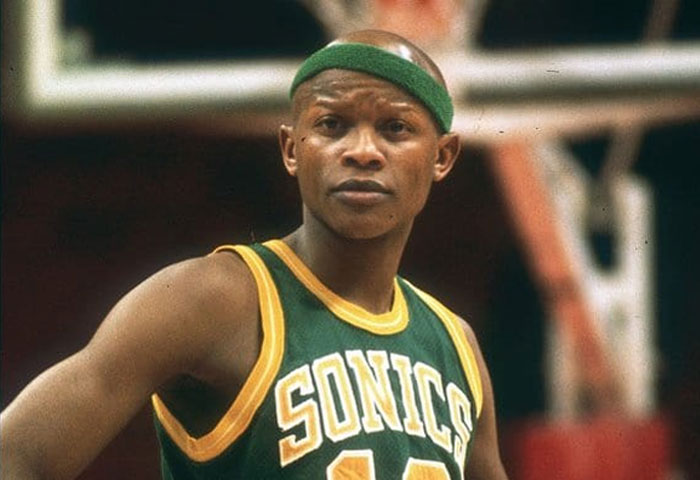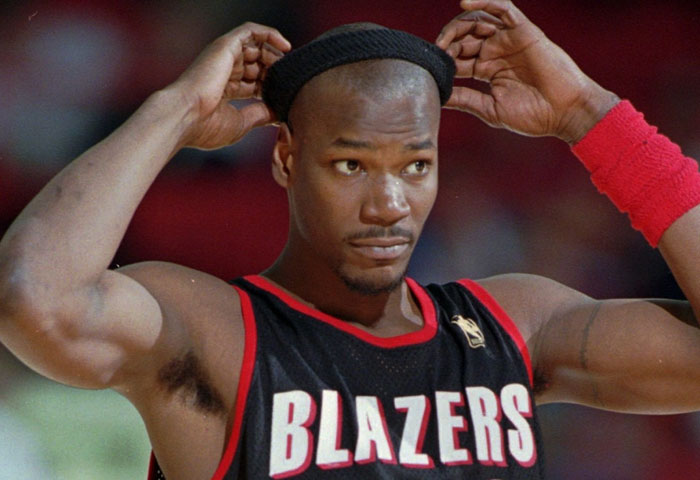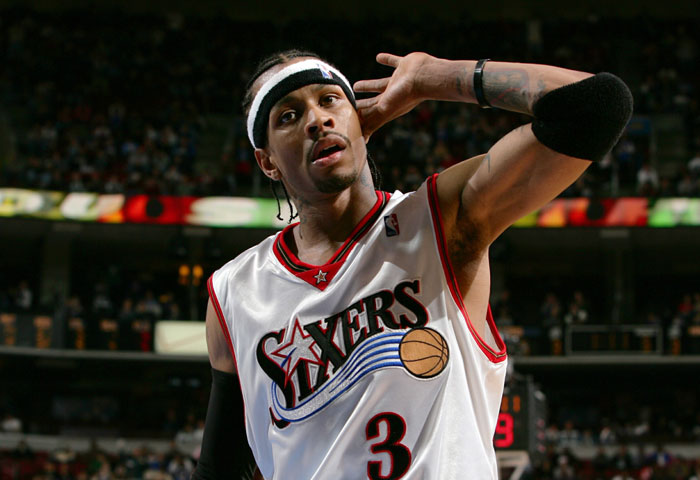Over the years, NBA stars have worn many sporting accessories like wristbands, compression tights, and the ever-enduring sneaker.
Besides the basketball shoe, no other implement might be more distinctive than the stylish yet practical headband.
Why do basketball players don this headgear? Their primary purpose is to absorb forehead sweat, which can hinder focus or vision during a game.
Headbands – or as some call them, sweatbands – are made from dense terry cloth, making them highly absorbent. In essence, using a headband is like tying a small towel around your head to absorb sweat.
Athletes who take part in sports with long play-times benefit most from this accessory.
For instance, basketball is a sport where players constantly run and jump across a large court for 48 minutes, so many players tend to work up quite a sweat.
Do They Serve Any Other Purpose?
The basketball headband might be born out of pure practicality, but its aesthetic appeal further boosted its popularity. Headbands – just like the versatile sneaker – can come in various forms, colors, and materials.
One of the more popular styles to emerge in recent years is the “ninja” headband, where players used a cloth tied at the back with slight tails.
Sadly, this trend didn’t last long, as the NBA league banned its use due to safety concerns and its inconsistency in size and length.
Who Started the Trend?
Wilt “the Stilt” Chamberlain was an NBA player who dominated the game during the 60s, and he could rebound and score like no other. In fact, one of his most well-known feats is scoring one hundred points in a single game.
A lesser-known honor of this two-time NBA champion is spearheading the headband movement during the 1970s.
He began wearing one when he came to Los Angeles, and it had a distinctly different design to what we’re accustomed to today.
Chamberlain’s headband sported a thicker front to absorb sweat better, which then tapered as it reached the back of his head.
With a household name like the Stilt donning headgear, which wasn’t a standard accessory at that time, others soon began to follow in his (giant) footsteps.
NBA Players With Headbands
Whether they did it for practicality, style, or somewhere in between, many other NBA stars have adorned the headband between its introduction up to today.
Bill Walton
Despite his NBA career’s rocky start due to multiple foot injuries, Bill Walton persevered to become one of the best centers of his generation.
Two of his most noteworthy achievements include winning the 1977 and 1986 championships as part of the Portland Trailblazers and the Boston Celtics, respectively.

Sadly, Walton’s basketball career was relatively short-lived because of past physical trauma. However, he certainly left a mark thanks to his stellar plays and his contributions to popularizing headband usage in the 70s.
Walton wore a bandana-style headband that needed tying at the back, and it worked both as a moisture absorber and as a way to contain his wild mane.
Donald Watts
Donald “Slick” Earl Watts is another 1970s star most well-known for leading the NBA league in assists and steals in 1976. What’s more, he also pioneered the “tilted headband.”

A few others might have also utilized this off-center style of donning headgear, but Slick perfected it. His completely shaved head – hence, his nickname – combined with the way he wore his sweatband, gave him one of the most distinctive looks in that era.
Watts’ use of the accessory began as early as his time with the Seattle SuperSonics. The team sported a striking color combination of green and gold, and it nicely complemented the NBA star’s casual style.
Cliff Robinson
Despite the booming use of the headband during the 70s, the accessory started losing traction in the following decade.

However, a few players in the 90s donned them once again, one of the most notable being Cliff Robinson. He wore the band in almost every match during his 19-year career.
Robinson was a stretch four, even long before well-known coaches coined the term, and he played for the Trailblazers when they reached the finals.
Ben Wallace
Another player who sported the headband in the 90s up to the early 2000s was Ben Wallace.
Many know him for his time with the Detroit Pistons as he played a crucial role in helping the team win the 2004 championship. He is also a four-time Defensive Player of the Year and led the league in blocks and rebounds in 2002.
He has a preference for single-color bands that neatly bunch up his signature afro hair.
Allen Iverson
The mid-2000s was like the golden age of basketball headwear, where the number of NBA giants who used them was at an all-time high.
Allen “The Answer” Iverson was a key influential figure in these years, and many attribute him to popularizing the cornrow headband combo.

Thousands of NBA fans similarly braided their hair during Iverson’s time with the 76ers. He also started favoring striped headbands over the traditional single-color ones.
Today, the two horizontal strips of red and black remains an iconic NBA design that persists among professionals and enthusiasts alike.
LeBron James
In the world of basketball, few names are uttered more than LeBron James.
He continues to dominate the NBA since his entry in 2003, with four NBA championships and MVPs under his belt. Throughout his long successful career, his trusty headbands have been along for the ride.
Other renowned NBA players who sported the headband during the 2000s include Stephen Jackson, Jason Terry, Vince Carter, Derek Fisher, Richard Hamilton, and Gerald Wallace.
Are Headbands Still Popular Today?
While it hasn’t reached the peak of the mid-2000s, headbands are growing in popularity once again.
In the 2018-19 regular season and playoffs, these accessories were on full-display almost every night. Dozens of players wore either the traditional headband or the ninja-style headband, which was banned the season after.
Thanks to the headband’s functional importance and sleek, casual style, it won’t be surprising to see this basketball accessory persevere for years to come.
Here are some of the best basketball headbands in the market.
